| Belongs to |
Baltic Middle Devonian
|
| Type | chronostratigraphy |
| Rank | Stage |
| Scope | regional |
| Status | formal standard |
| Author | Mark |
| Year | 1958 |
| Etymon | Burtnieks Lake, Latvia |
| Age top (Ma) | 377 |
| Age base (Ma) | 380.5 |
| Age (Ma) |
Givetian
|
| Alt. index | D2BR |
| Date changed | 2022-12-05 |
| Locality | Type | From (m)1 | To (m)2 | Reference | Remarks |
|---|---|---|---|---|---|
| Salaca River outcrop |
holostratotype
|
| Reference | Content | Year1 | Pages | Remarks |
|---|---|---|---|---|
| Kleesment & Mark-Kurik, 1997a |
1997
| 116-118 | ||
| Mark-Kurik & Põldvere, 2012a |
2012
| |||
| Mark, 1958d | First mention |
1958
|
by A. Kleesment & E. Mark-Kurik
Original text from: Raukas, A., Teedumäe, A. (eds). 1997. Geology and Mineral Resources of Estonia. Estonian Academy Publishers, Tallinn. 436 pp. ISBN 9985-50-185-3. Available online at: sarv.gi.ee/geology.
As an independent stratigraphical unit the Burtnieki strata was distinguished by Gross (1940b, 1942). Into the rank of regional stage it was raised by Mark-Kurik (Mark 1958). The stratotype is the bank of the Salaca River, 12 km northwest of Lake Burtnieki in northern Latvia. In Estonia, main exposures are situated at Helme and on the banks of the Ahja (Photo 25) and Võhandu rivers. The outcrops of Karksi, Härma, Koorküla and Essi are known as localities of fossil fishes (Fig. 86).
The Burtnieki Stage is spread in southeastern Estonia. The outcrop area forms a 25–50-km-wide belt stretching from Ipiku and Valga in the west to Mehikoorma and Karisilla in the east. The total thickness ranges from 60.6 to 94.5 m (Fig. 86).
The Burtnieki Stage is mainly represented by light (white, yellowish, pinkish and greyish-brown) fine-grained medium- to weakly-cemented cross-bedded sandstones with interlayers of siltstone and clay. The stage lies everywhere above the Tarvastu beds of the Aruküla Stage (Figs. 75, 76, 85). The topmost layer of the Tarvastu beds is, as a rule, represented by reddish or variegated (purplish-grey to reddish-brown) siltstones, which are overlain by white, yellowish-, brownish- or purplish-grey poorly sorted loose sandstones of the Burtnieki Stage.
The Burtnieki Stage is divided into the Salaca (below) and the Abava (above) substages (Table 10). Mark-Kurik (1993a, b) has treated the latter as an independant stage.
Fossils coming from different parts of the Burtnieki Stage, the Härma [hm] and Koorküla [kr] beds and the Abava [ab] Substage belong mainly to fishes: Tartuosteus maximus Mark-Kurik [hm], cephalaspidids [hm], Pycnosteus tuberculatus (Rohon) [hm,kr], Ganosteus stellatus Rohon, Psammosteus bergi (Obr.) [hm], Actinolepis magna Mark-Kurik [hm,ab], Tropinema haermae (Mark) [hm], Homostius latus Asm. [hm,kr], Heterostius ingens Asm. [hm,kr], Coccosteus markae O.Obr. [hm], Asterolepis sp.1 Kar.-Tal.[hm], Homacanthus gracilis (Eichw.) [hm], Nodocosta sp. [kr], Acanthodes? sp. A, Acanthodes? sp. B, Acanthodes? sp. D, Acanthodes sp. [ab], Cheiracanthus brevicostatus Gross [hm,ab], C. longicostatus Gross [hm], Cheiracanthus sp. [ab], Ptychodictyon rimosum Gross [hm], P. sulcatum Gross [hm], ? Ptychodictyon sp. [hm], Diplacanthus carinatus Gross [hm], D. gravis Valiuk. [hm], Acanthodii gen.n. Valiuk. [hm], Markacanthus alius Valiuk. [hm], Rhadinacanthus multisulcatus Valiuk. [hm], Nostolepis sp.n. Valiuk. [hm], Gyroptychius elgae Vorob. [hm], Glyptolepis? karksiensis (Vorob.) [hm], holoptychiids [hm], Psammolepis sp.sp., Byssacanthus sp.sp. [kr,ab], Hamodus lutkevitshi Obr. [kr,ab], Panderichthys? sp. [kr,ab], Psammolepis abavica Mark-Kurik [ab], Psammosteus sp.sp. [ab], Watsonosteus sp.n.? [ab], Livosteus? sp. [ab], Plourdosteus? panderi O. Obr. [ab], Asterolepis essica Lyarsk. [ab], Microbrachius cf. dicki Traq. [ab], Chondrichthyes? [ab], Laccognathus sp. [ab], Osteolepididae [kr, ab], Onychodus? sp. [ab], Dipnoi [ab], Moythomasia? sp. [ab], Cheirolepis sp. [ab] (Sorokin 1981, Valiukevičius 1994, modified).
Of other fossils, silicified wood has been found in the Härma beds and rare lingulates and various remains of the pteridophyte Pseudosporochnus estonicus Kalamees in the upper clayey part of the Abava Substage (Kalamees 1988).
In Estonia and adjacent areas, the Burtnieki Stage is represented by the Burtnieki Formation. On the basis of the lithological and mineralogical data, three cyclic units are distinguished in the Burtnieki Formation. These cycles are observable in all sections of Estonia and defined as the Härma (lower), Koorküla (middle) and Abava (upper) beds (Table 10). Each unit begins with relatively coarse-grained light, variegated (yellowish, pinkish, greyish and brownish) sandstones of a mature mineral composition and ends with clayey silt layers (Figs. 75, 76, 85, Kleesment 1995).
Lithologically and mineralogically (Fig.78), these three beds are rather similar. The sandstones are prevailed by fine-grained fraction which usually forms 50–70% of the rock. The rate of medium-grained and very fine-grained sand fractions is variable, forming 10–30 and 6–20% of the rock, respectively. The share of other fractions rarely exceeds 5%. The predominating thickness of the cross-bedded sandstone series is 20–30 cm. They are dipping to the south, southwest, and southeast. In the Härma beds, the southwest inclination is prevailing, while in the Koorküla and Abava beds the inclination directions are more variable. Siltstones are mostly medium-cemented, variegated, clays are strongly silty, grey, and reddish-brown.
Mineralogically, the rocks of the Burtnieki Formation are predominantly quartzose and feldspatic arenites with the quartz content of 70–90%. Micaceous arenites (content of micas up to 50%) occur as rare thin interbeds. The heavy fraction is dominated by ilmenite (45–65%). The share of allothigenic transparent minerals in the heavy fraction is in general 15–30%. This group is dominated by zircon (40–70%). Of other accessory minerals, tourmaline (7–20%) and staurolite (3–15%) are more important, noteworthy is the appearance of kyanite (Fig. 78). The share of tourmaline is greatest in the Abava beds where it makes up 10-30% of the group of transparent allothigenic minerals.



